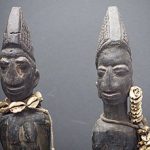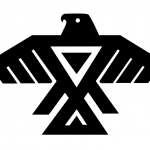Tribal Traditions: Africa, Australia and the Americas
It is really too big of a topic to try and discuss traditions of tribes in this textbook, as not only each continent, but each country, each tribe, and each ethic group has a rich, diverse, and important story to tell. One can only apologize and say that this is a very traditional “world religions” book, and we have been looking at religious traditions that are global in nature, and which have a more formal organization to them.
However, some attention to the kinds of traditions, rituals, beliefs and practices of our indigenous people across these specific four continents informs us as to how spirituality eventually emerged in those places.
So we are going to look at four traditions: the North American Anishinaabe (Ojibwe) from the Great Lakes area of the US and Canada, the South American Incas/Quechuas primarily located along the western coast of South America, the Indigenous/Aboriginal people of Australia, and the Yoruba people near and in Nigeria on the African continent. Each has a rich tradition of spirituality, of belief, and of ritual.
According to the Pluralism Project of Harvard University,
One of the few common elements within the diversity of Native traditions is the idea that all dimensions of social life are profoundly integrated. Instead of “religion,” the broader term “life-way” is often used to describe the traditions of Native peoples.




![Death or Glory [Aboriginal figures fighting] Date circa 1860 s - 1901 at Library of New South Wales](https://mlpp.pressbooks.pub/app/uploads/sites/1155/2022/09/SLNSW_799111_1_Death_or_Glory_Aboriginal_figures_fighting-150x150.jpg)
